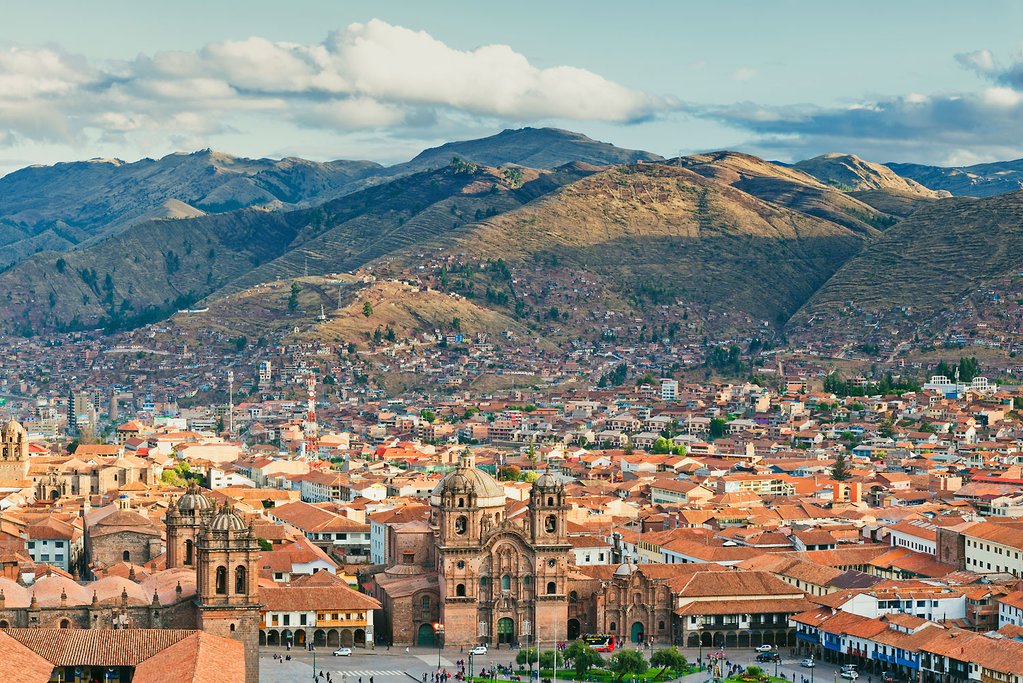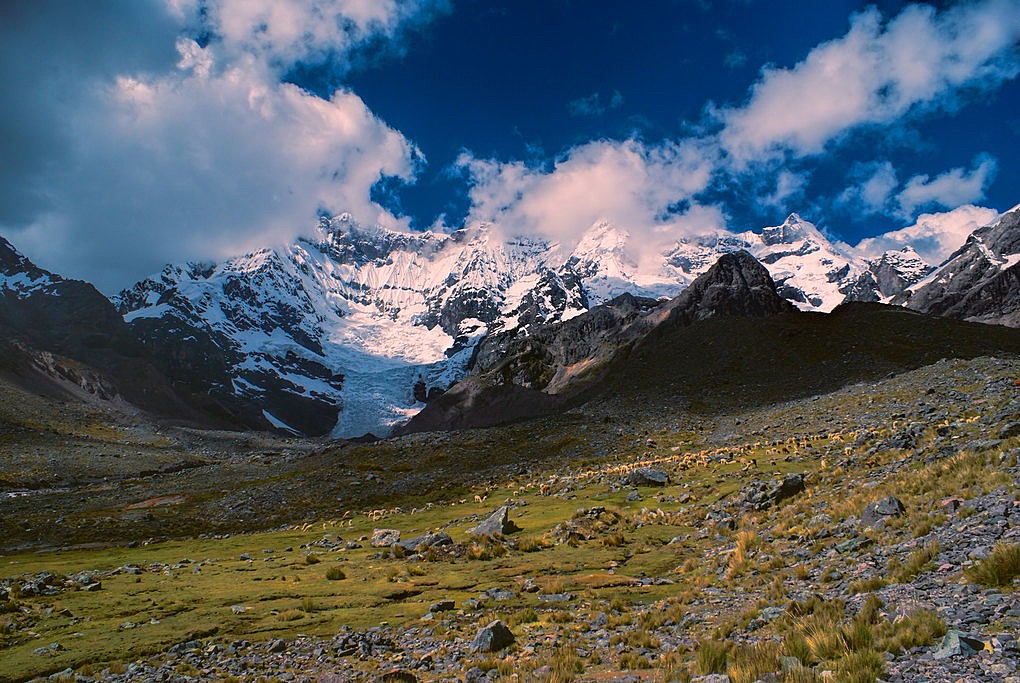Highlights
- Visit traditional herding villages nestled in the mountains
- Soak in the hot springs of Upis and Pachanta
- Summit the impressive 5,050 m Campa pass
- Get a chance to spot endemic wildlife such as vizcachas and Andean foxes
- Explore the ancient ruins of Machu Picchu
Brief Itinerary
| Day | Highlights | Overnight |
|---|---|---|
| Day 1 | Arrival in Lima | Lima |
| Day 2 | Arrival in Cusco, Exploring the City | Cusco |
| Day 3 | Cusco City Tour | Cusco |
| Day 4 | Ausangate Trek Day 1/5: Cusco - Tinqui - Upis | Upis |
| Day 5 | Ausangate Trek Day 2/5: Upis to Jatun Pucacocha | Jatun Pucacocha |
| Day 6 | Ausangate Trek Day 3/5: Jatun Pucacocha to Ausangate Base Camp | Ausangate Base Camp |
| Day 7 | Ausangate Trek Day 4/5: Ausangate Base Camp to Pachanta | Pachanta |
| Day 8 | Ausangate Trek Day 5/5: Pachanta - Tinqui - Aguas Calientes | Aguas Calientes |
| Day 9 | Machu Picchu Excursion: Aguas Calientes - Machu Picchu - Cusco | Cusco |
| Day 10 | Departing Cusco |
Detailed overview
Day 1: Arrival in Lima

¡Bienvenidos! Welcome to Lima, Peru's largest city and central metropolitan hub, and home to one-third of the country's population. Located at the site of a pre-Columbian indigenous Ychsma settlement, which was conquered by the Inca empire in the 15th century and later by the Spanish conquistadores, Lima has a fascinating history and a diverse mix of cultures. Amerindian, European, Afro-Peruvian, and Asian—especially Chinese and Japanese—influences make Lima a dynamic and exciting city to explore.
Lima's breezy location on the Pacific Ocean and mild desert climate make it the perfect city for exploring on foot. Head downtown to mingle with locals, stretch your legs, and grab a bite to eat in one of the many award-winning restaurants.
Suggested activities include:
- Explore the historic center of Lima, a UNESCO World Heritage Site packed with fascinating Spanish architecture. Start with a scenic tour of the colonial downtown, which emanates from the main square. Stroll over to the 16th-century Cathedral, which took 80 years to construct and was built in the grandiose style of the Spanish Empire.
- Visit the Casa Aliaga, a colonial mansion granted by chief conquistador Francisco Pizarro to Jerónimo de Aliaga, one of his captains, in 1535. This is the only house from that era that still belongs to the same family.
- Stroll around the Pueblo Libre district to the privately owned Larco Museum of pre-Columbian art, housed in a beautifully restored viceregal mansion built over a 7th-century pre-Columbian pyramid. The museum boasts a vast pre-Colonial collection of gold and silver artifacts, as well as pieces of erotic art.
- In the evening, head to the eclectic "Love Park" in the upscale coastal district of Miraflores, where you can admire a huge kissing statue and beautiful mosaic walls. The park is built on the cliffs of Chorrillos and is a perfect place to enjoy a spectacular sunset over the Pacific.
- Enjoy a nightcap at an open-air cafe or restaurant in the diverse Miraflores neighborhood.
Day 2: Arrival in Cusco, Exploring the City

Head to the Lima airport for your transfer flight to Cusco. This ancient city is the former capital of the Inca empire, which reigned from the 13th to 16th centuries after conquering the Killke settlement on the same location.
Remember: you will be 11,000 feet (3,000 m) above sea level, so take it easy and remember to drink lots of water. Since Cusco was designed by the Incas as a city for walking, start your exploration of the narrow stone alleyways on foot. Take a walk through the plaza — if the weather is beautiful, it's a perfect place to sit on a balcony and have a cup of coca tea while adjusting to the elevation.
Suggested activities include:
- Discover the elaborate Puca Pucara ruins—an architectural complex of alleged military use with multiple plazas, baths, aqueducts, walls, and towers. It is believed that the entourage of the Incan emperor used it while he stayed at Tambomachay, the elaborate estate and baths nearby.
- Explore San Blas, an old bohemian quarter famous for its picturesque white walls, blue doors, and creative artisan community.
- Experience the legendary Mercado Central de San Pedro, a large and diverse market famous for its mouth-watering fruit juices, home-style meals, medicinal herb stalls, and rows of various meats, breads, vegetables, and other necessities.
- Eat lunch at a local Peruvian restaurant and sample local flavors and cooking techniques—crackling pork, pickled vegetables, seasonal flavors, bread baked in earthen ovens, roasted vegetables, and sweet donuts make for a delicious and filling meal.
Day 3: Cusco City Tour

Today's tour will begin at the local San Pedro Market. The locals shop at this market every day in order to stock up on produce and groceries making this market experience as authentic as Peru gets. The market is located indoors and includes many different food stalls and vendors. Be sure to try their endless selection of fresh fruit smoothies, which are the perfect refreshing treat.
From the market, you will head to the most important temple of the Inca Empire, the Sun Temple, known as Qoricancha. Here, you can observe detailed and intact architecture, and within the temple, you will see smaller temples dedicated to the moon, rainbow, stars, lightning, and thunder, among others.
From Qoricancha, you will walk to an important religious site called Sacsayhuaman, which features immense stones. Although the site was religious, the Spanish considered it a military fortress because of its location and the way it was built. After your tour, head back to your hotel for some rest.
Day 4: Ausangate Trek Day 1/5: Cusco - Tinqui - Upis

You'll depart from your hotel in Cusco early this morning for a scenic 3-hour drive to the village of Tinqui (3,800 m), located at the base of the Bilcanota mountain range. Along the way, you'll observe local farmers and herders with their alpaca flocks. In Tinqui, you'll meet your crew of mules and their handlers, and start your trek by heading towards your campsite in Upis (4,400 m).
The first day of trekking is relatively smooth and passes through hilly grasslands where you may encounter vizcachas (chinchilla-like rodents), condors, and foxes. Once you arrive in Upis, you will be rewarded with views of the Ausangate glaciers rising above the site. End the day with a refreshing soak in the nearby hot springs.
Accommodation: Camping
Chat with a local specialist who can help organize your trip.
Day 5: Ausangate Trek Day 2/5: Upis to Jatun Pucacocha

Get ready for a day of more intense trekking. From your campsite in Upis, you will climb through the Arapa pass (4,800 m) before reaching Uchuy Pucacocha (“little red lake”), one of the several dazzling mountain lakes in the region. Marvel at its waterfalls, and continue onwards to Jatun Pucacocha (“big red lake”), where you will camp along its shores.
Accommodation: Camping
Day 6: Ausangate Trek Day 3/5: Jatun Pucacocha to Ausangate Base Camp

After a hearty breakfast in Jatun Pucacocha, you'll start your journey to Ausangate Base Camp. You will cross two different passes today. The Apuchata pass (4,900 m) comes first, followed by a descent to the turquoise Laguna Ausangate Q'ocha.
After taking some time to rest and enjoy the scenery, you will continue up Palomani pass. At 5,200 m, this is the highest pass of the trek. The ascent is challenging and steep, but well worth it. Upon reaching the summit, you'll be treated to spectacular views of the snowcapped peaks of Tres Picos and Puka Punta.
Now, you'll start the descent toward Ausangate Base Camp (4,510 m). Here, amidst the highlands meadows and icy moraines, you'll set up camp for the night.
Accommodation: Camping
Day 7: Ausangate Trek Day 4/5: Ausangate Base Camp to Pachanta

The last day of pass crossing begins with a tranquil hike from Ausangate Base Camp to Lake Ticllacocha. Along the way, more vizcachas and perhaps even rare camel-like vicuñas may be roaming the green grasses of the valley.
Then, rise up for your final challenge: Q'ampa pass (5,050 m). You'll see some strikingly beautiful glaciers as you tread over the snowy scree to summit the pass. Once you reach the top, you can see the towering Apu Salkantay.
After descending the pass, you'll set up camp for the last time at Pachanta (4,360 m), and rest in the soothing waters of the site’s hot springs.
Accommodation: Camping
Day 8: Ausangate Trek Day 5/5: Pachanta - Tinqui - Aguas Calientes

This morning, enjoy an easy 3 to 4-hour hike downhill from Pachanta back to the village of Tinqui (4,237 m) where you will have lunch. After lunch, bid farewell to the muleteers, and transfer to Ollantaytambo and catch the train to Aguas Calientes, the town at the base of Machu Picchu.
Upon arrival in Aguas Calientes, transfer to your hotel for some well-deserved rest.
Day 9: Machu Picchu Excursion: Aguas Calientes - Machu Picchu - Cusco

Get an early start to beat the crowds and get the best views of the ancient ruins. From Aguas Calientes, it's an easy 25-minute bus ride up to the Machu Picchu ruins.
This 15th-century Inca citadel is located at 7,970ft (2,430 m) and is a masterpiece of engineering that served as a sanctuary and retreat for the Incan Emperor Pachacutec and his royal court. Machu Picchu, which means "Old Mountain," is considered a World Heritage Site by UNESCO and is one of the new Seven Wonders of the World.
Built as a seasonal residence for the Inca family, Machu Picchu was rarely home to more than 800 people, and during the royals' absence, a mere 100 servants would remain at the site to maintain the grounds. Machu Picchu was abandoned 100 years after construction due to the Spanish conquest and remained largely hidden to the outside world until the early 20th century.
Your guide will lead you around the site and explain the different buildings and curious corners of the building complex. Approximately one-third of the site has been reconstructed into its original structure, giving visitors a sense for the grandeur and artistry of the original citadel.
After the tour, take the bus back to Aguas Calientes for lunch and then board the train to Ollantaytambo. Upon arrival in Ollantaytambo, transfer to a vehicle for your transfer back to Cusco.
Day 10: Departing Cusco

Today is your last day in Peru! You will be met at your hotel for a transfer to Cusco Airport, where you will transfer to your international departure. ¡Buen viaje!
